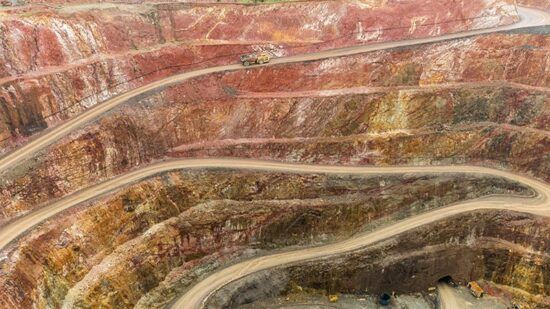Renewable energy (RE) is one of the fastest growing industries globally and has evolved into a core aspect of infrastructure.
The sector is witnessing a major boost in interest from investors, resulting in huge inflows over the next five to 10 years. According to IRENA, renewable energy capacity has increased by circa 10% year-on-year, which translated into an additional circa 261 gigawatts in 2020. This increase represents 82% of total global capacity increment, with renewables contributing to the generation of 38% of Europe’s electricity during 2020, surpassing fossil fuels for the first time in history.
The rapid adoption of renewable energy has been supported by the drop in costs and technological advancements over the years. Global Levelized Costs of Energy (LCOE) of solar PV and wind power have been on a downward trajectory in the past decade, decreasing by around 89% and 70%, respectively, making them the cheapest sources of energy, across more than two thirds of the world. Furthermore, global costs of lithium-ion batteries, which currently contributes to the bulk of storage deployment, has also been declining, leading to enhanced battery storage deployment, and the overcoming of renewables intermittency. Battery prices have dropped by c. 87% during the past decade.
Technological advancements, coupled with the drop in LCOEs, has been spurring the growth of renewable energy. Wind farms are getting larger in size, resulting in increased capacity and production capability. In 2017, the average total height (from base to tip) of an onshore US turbine was 142 meters (466 feet), which has evolved to 813 feet tall with GE’s new turbine, Haliade-X. Furthermore, the average rotor diameter of US wind turbines reached 367 feet in 2017, whilst the Haliade-X’s rotor diameter reached 721 feet, roughly double the average size. The Haliade-X represents an evolution in the turbines industry. It is the most powerful wind turbine in the world and it features a 60-64% capacity factor above industry standard.
Additionally, there is heightened political focus on clean energy across all leading economies, promoting various policies and agreements to support RE, with the most prominent being the Paris Agreement. Furthermore, Joe Biden, president of the United States of America, has recently held the 2021 Leaders’ Climate Summit in the White House. Biden has proposed a $2trn-infrastructure plan focusing on green energy and decarbonisation, which began implementation by extending incentives (e.g. extension of ITCs and PTCs).
In the EU, there has been increased commitments to National Energy and Climate Plans (NECPs) and initiatives, such as the European Green Deal, which seeks to cut carbon emissions by 95% by 2050. While China is committed to carbon neutrality by 2060 and more than 87 nations have implemented RE targets, translating into new 700 GW of RE capacity to be installed by 2030. In addition, a growing number of corporates are joining RE100, resulting in capacity of +100GW expected to come online between 2020 and 2030. The 2030 consolidated commitments of 800GW are expected to cost around $1trn. However, global installations are forecasted to surpass the 800GW. These commitments fall short from the Paris Agreement requirement to limit the rise in global temperatures by less than 2 degrees Celsius.
The Covid-19 pandemic has also played a key role in the rising penetration of the RE sector, as it shed light on the importance of the clean energy transition. According to IRENA and IEA, total energy demand has contracted by 6% during 2020, whilst demand for renewables has increased by circa 1%. Furthermore, CO2 emissions have decreased by 7% in 2020, despite the annual average increase of 1.3%, over the period from 2014 to 2019. Renewable energy is placed at the core of the Covid-19 economic recovery plans, echoing an accelerated market awareness for climate change and the importance of the clean energy transition.
New technologies are emerging, spurring the clean energy transition and facilitating the adoption of renewable energy. Batteries and ancillary services are supporting the RE systems, with annual battery storage deployment increasing fivefold since 2017. This helped shift renewables from an intermittent source to a baseload. The lithium-ion battery market is forecasted to grow by 15% annually by 2030, to reach $117bn. This has made storage more of a mainstream technology for utility scale, in addition to EVs-driven demand.
In addition, green hydrogen is emerging as a potentially transformative technology on the back of policymakers moving on from promoting renewables to focusing on full decarbonisation and the growing interest of investors. It is the fuel to be used in vehicles, ships, power plants and existing networks; as well as storage providing longer duration storage versus one to four hours delivered by lithium-based battery storage. According to McKinsey, in a decade, ‘indirect’ power demand for electrolysis of green hydrogen is expected to account for 40% of electricity demand growth in the industry and transport sectors.
Currently, more countries are joining the net-zero emission target under the Paris Agreement outside Western Europe and the US. These countries are developing their RE framework to entice investors to inject money by introducing support schemes in some countries. For instance, Poland has introduced the contract for difference scheme, providing generators with a price floor, hedging against adverse price movements, to expand its national renewables scene.
However, the recent expansion in investment in RE has led to economies of scale and a shift from subsidy-based global market towards a drop in tariffs and capitalisation of power purchase agreements (PPAs), which has surged by more than 60x since 2009, to reach 19.5GW in 2019. Numerous corporates like Google and Apple have been sourcing 100% of their energy consumption from renewables already.
As the renewable energy market is growing globally, the M&A scene is witnessing a high deal flow in greenfield and brownfield assets, as opposed to the historical trend of investors choosing to invest in operational assets only. The market growth has also led to the evolution of standalone renewable energy companies, without being part of a bigger utility play, such as Neoen, FRV and AMP. Furthermore, the large utility and energy groups are aggregating small-sized technologies in support of small developers and new technologies.
Considering the aforementioned sector drivers and trends, which mainly constitute an increase in installed capacities, a drop in LCOEs, technological advancement, sustainability and ESGs global initiatives and policies, governmental support and ultimately spurring the sector growth. Currently, investors view renewable energy as a lucrative, ever-evolving industry with promising growth outlook, shifting the global focus and trend away from the traditional infrastructure towards clean energy transition.








